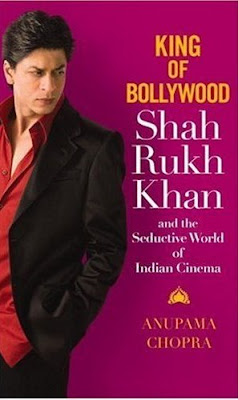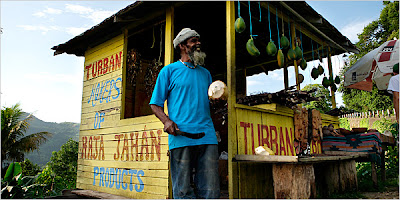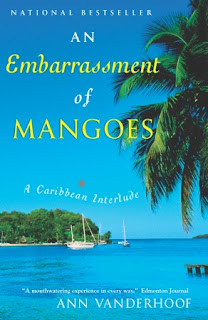
The first thing you need to know about this book
"King of Bollywood: Shah Rukh Khan and the seductive world of Indian cinema" is that its author,
Anupama Chopra is probably India's most interesting and well known film critic. She writes about Bollywood for many local and international magazines and also presents a very popular film review show on NDTV, one of India's leading news channels.
Now, coming to the book, anyone who knows anything about Bollywood will have heard of Shah Rukh Khan (SRK) , the reigning King of Bollywood. When SRK was in Toronto last year for the premier of the movie
"Kabhi Alvida Na Kehana", he had large crowds come out to greet him, volumes that the local police had never dealt with before, not even when Brad Pitt or Tom Cruise visited. I know, I was there! ;)
Chopra's book delves into SRK's family background (his father was from Peshawar, his mother from Bangalore), his childhood in Delhi, the struggling years, the love of his life Gauri, and, finally, his phenomenal rise to fame.
Chopra, after hours and hours of interviews with SRK, tells his story in a lively and engaging manner. She smartly sprinkles the pages of his autobiography with a lot of information on the Indian film industry, Bollywood in particular. She tells us about the big film houses like
Yash Raj films, Rajshri films,
Sanjay Leela Bhansali of "Black" and "Devdas" fame and Karan Johar of
Dharma Productions who she believes was a big player in the construction of Shah Rukh Khan as a global icon. All this is very helpful because what she is doing in fact is analyzing the evolution of the Bollywood film industry through the lens of Shah Rukh Khan. She also touches briefly on the dark side of Bollywood...its underworld financiers and how many stars are victims of extortion by the mafia.
"An industry joke went that movie budgets would now have to include the mafia payments. Armed bodyguards became a favored fashion industry"Anupama writes about her subject with a lot of affection and you can tell that she is genuinely fond of him, but her writing is at its strongest not when talking about SRK but when reviewing seminal Indian films like "Mother India",
"Devdas" and "
Dilwale Dulhaniya Leh Jayenge". She does such a great job of examining these films that I want to view each one of them again.
 (SRK and Madhuri Dixit in "Devdas". Devdas is based on Sarat Chandra Chatterjee's novel of the same name published in 1917. According to Chopra, it was written in 1901 but Chatterjee at that time dismissed it as a work written when his mind "was completely befuddled by drink"
(SRK and Madhuri Dixit in "Devdas". Devdas is based on Sarat Chandra Chatterjee's novel of the same name published in 1917. According to Chopra, it was written in 1901 but Chatterjee at that time dismissed it as a work written when his mind "was completely befuddled by drink" Dilwaale Dulhaniya Leh Jaayenge or DDLJ has become a Bollywood landmark. It articulated a value system that is so attractive to Indian viewers: that the extended family is sacrosanct and individual desires must be sacrificed at the altar of greater social good.
Dilwaale Dulhaniya Leh Jaayenge or DDLJ has become a Bollywood landmark. It articulated a value system that is so attractive to Indian viewers: that the extended family is sacrosanct and individual desires must be sacrificed at the altar of greater social good.So what made this very ordinary boy from a middle class home in Delhi, one who has a limited range of expressions and has never even kissed a girl on screen such a heart throb, such a star...the King of Bollywood? Chopra doesn't come out and tell us directly what SRK's magic formula is but you sense he has a certain charisma, a work ethic, a penchant for taking risks with his movies and an intense energy that simply lights up the screen and peoples' hearts.
In closing, I would say this is a very useful book if you enjoy Bollywood and if you're curious about one of its leading actors, Shah Rukh Khan. It is not a work of great literary genius, but it's not fodder for the tabloids either. Check out Deepika Shetty's
excellent review(it was the one that prompted me to read the book). Taryn of
"I Read Too Much" has reviewed the book as well and I really appreciated reading it from her perspective.
Further Reading:
Charles Taylor's review in the New York TimesSavitha Gautam's review for The HinduI am planning on putting together a list of books on Indian cinema, fiction and non-fiction. Would appreciate your input, thank you!
Some other books on Indian cinema:
Sholay : The Making of a Classic/Anupama Chopra. New Delhi, Penguin Books, 2000,
Dilwale Dulhania Le Jayenge: The Making of a Blockbuster by Anupama Chopra
Fantasies of a Bollywood Love Thief: Inside the World of Indian Moviemaking by Stephen Alter
Lights Camera Masala : Making Movies in Mumbai/Sheena Sippy. Mumbai, India Book House, 2006Helen : The Life and Times of an H-Bomb/Jerry Pinto. New Delhi, Penguin, 2006Filming the Gods : Religion and Indian Cinema/Rachel Dwyer. New Delhi, Routledge, 2007
The Spirit of Lagaan: The Extraordinary Story of the Creators of a Classic by Satyajit BhatkalBombay Cinema; Ranjani Mazumdar
Bollywood: A History by Mihir Bose Lotus Collection Roli Books
Filming by Tabish Khair (fiction)
Hero: A Fable by I. Allan Sealy. Viking, New Delhi. (fiction)
Show Business by Shashi Tharoor (fiction)






































